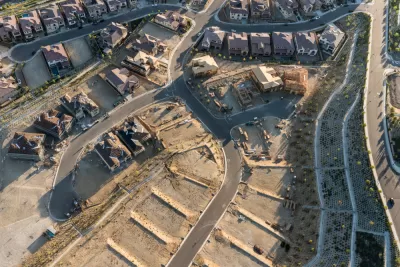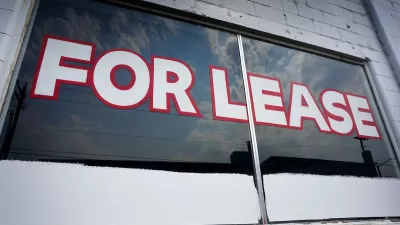Walla Walla's 2018 zoning reforms included adaptive reuse, reduced parking requirements, and more relaxed rules for accessory dwelling units.

When Walla Walla, Washington reformed its zoning code in 2018, the changes didn't get much attention, writes Stephen Fesler. Yet the city of 33,000 has quietly eliminated single-family zoning, among other changes such as "procedural processes, subdivision standards, street connectivity requirements, and adaptive reuse of non-residential buildings in residential zones," as well as "a wider variety of allowed uses in the lower density zone, a reduction of residential parking requirements, and more flexible accessory dwelling unit regulations."
"Generally speaking, the Neighborhood Residential zone allows for higher lot coverage, smaller setbacks, reduced parking requirements, and no minimum lot sizes, widths, or depths," amounting to standards that "allow for much more to be constructed on lots and legalize missing middle housing in areas where they were banned." The city's "approach with the Neighborhood Residential zone is particularly uncommon in Washington as it doesn’t have a defined density limit — something that most cities tend to use in lower-density residential zones. Instead, the zoning code simply relies upon other development standards like landscaping, height, setbacks, parking, and lot coverage to control how much can be built on a lot."
The simplicity and flexibility of this regulatory framework, Fesler says, is "something that many cities might do well to follow."
FULL STORY: Walla Walla: A Washington City Without Single-Family-Only Zoning

Manufactured Crisis: Losing the Nation’s Largest Source of Unsubsidized Affordable Housing
Manufactured housing communities have long been an affordable housing option for millions of people living in the U.S., but that affordability is disappearing rapidly. How did we get here?

Americans May Be Stuck — But Why?
Americans are moving a lot less than they once did, and that is a problem. While Yoni Applebaum, in his highly-publicized article Stuck, gets the reasons badly wrong, it's still important to ask: why are we moving so much less than before?

Research Shows More Roads = More Driving
A national study shows, once again, that increasing road supply induces additional vehicle travel, particularly over the long run.

Judge Halts Enforcement of Anti-Homeless Laws in Grants Pass
The Oregon city will be barred from enforcing two ordinances that prosecute unhoused residents until it increases capacity and accessibility at designated camping sites.

Advancing Sustainability in Los Angeles County Schools
The Los Angeles County Office of Education’s Green Schools Symposium brings together educators, students, and experts to advance sustainability in schools through innovative design, climate resilience strategies, and collaborative learning.

Using Old Oil and Gas Wells for Green Energy Storage
Penn State researchers have found that repurposing abandoned oil and gas wells for geothermal-assisted compressed-air energy storage can boost efficiency, reduce environmental risks, and support clean energy and job transitions.
Urban Design for Planners 1: Software Tools
This six-course series explores essential urban design concepts using open source software and equips planners with the tools they need to participate fully in the urban design process.
Planning for Universal Design
Learn the tools for implementing Universal Design in planning regulations.
City of Moreno Valley
Institute for Housing and Urban Development Studies (IHS)
City of Grandview
Harvard GSD Executive Education
NYU Wagner Graduate School of Public Service
City of Cambridge, Maryland
Newport County Development Council: Connect Greater Newport





























